Inbound Marketing Explained: Definition, Examples, Tips, and More
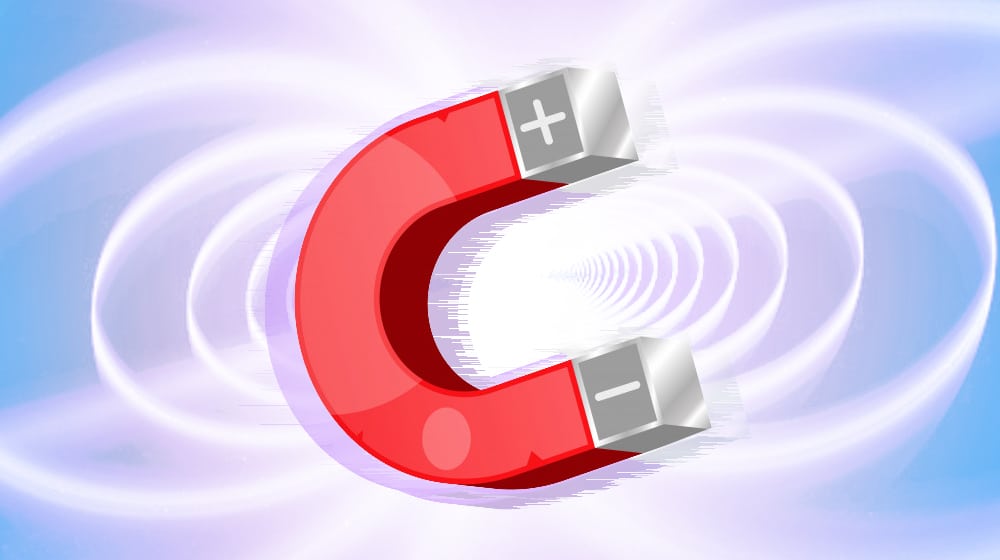
Inbound Marketing is the subject of a lot of questions in the marketing industry. It's just on the edge of sensible enough to understand what it is intuitively, but there's a surprising amount of depth to it.
The short version is simple:
That's great for an elevator pitch, but it's decidedly not helpful. That's why I put together this guide; to educate you on what inbound marketing is, how to use it, and how to improve your existing efforts.
 30 Second Summary
30 Second Summary
Inbound marketing generates demand and draws users to your brand. It's content-focused and relies on SEO, keyword research, and creating buyer personas. Use tools for content creation, email management, and form building. Promote your content and build backlinks. Successful campaigns from brands like Hubspot and Wendy’s show the power of engaging, valuable content. Focus on user needs, build relationships, and convert leads into loyal customers. Optimize constantly for better results.
What is Inbound Marketing Specifically?
Some people think inbound marketing is any marketing that draws people into your site. This isn't quite true. Inbound marketing is a bit narrower than you might think. To quote Hubspot:
"Inbound marketing is a business methodology that attracts customers by creating valuable content and experiences tailored to them. While outbound marketing interrupts your audience with content they don't always want, inbound marketing forms connections they are looking for and solves problems they already have."
Inbound marketing is all about the "if you build it, they will come" philosophy of marketing. It's about creating high-quality content and experiences. It's about being available and engaging with your readers. It's about building relationships, presenting insights, and creating solutions your readers can use.

What isn't inbound marketing?
- Paid advertising.
- One-way marketing, like radio and TV ads.
- Disruptive advertising.
- Anything content that isn't sought out intentionally by the user.
Inbound marketing is all about being able to provide when a user wants something. Most users do some research before they make a purchase; you're there with your unbiased opinions and useful information. Users have problems that they need to solve, and you're there with solutions to those problems, presented for free, without the need to subscribe to a proprietary service to see the answers.
The exact boundaries and processes of inbound marketing vary from marketer to marketer. Hubspot uses a Flywheel design; strangers are attracted and turned into prospects, prospects are engaged and turned into customers, customers are delighter and turned into promoters and brand advocates, and those people serve to help attract new strangers.
Others consider a more traditional linear path; users are attracted and turn into visitors, visitors are enticed by calls to action and converted into leads, leads are convinced via emails and other information to convert deeper and become clients, clients are engaged and build loyalty to become advocates, and advocates spread the word.
Whatever way you formulate your structure, inbound marketing is all about doing this by being there when a user needs something you can provide. You aren't going into their home to throw your messaging in their face; you're building a presence they can't help but find when they go out looking for that content.
In a way, inbound marketing is about becoming a bit of a black hole - a gravity well that draws in users deeper and deeper into your clutches.
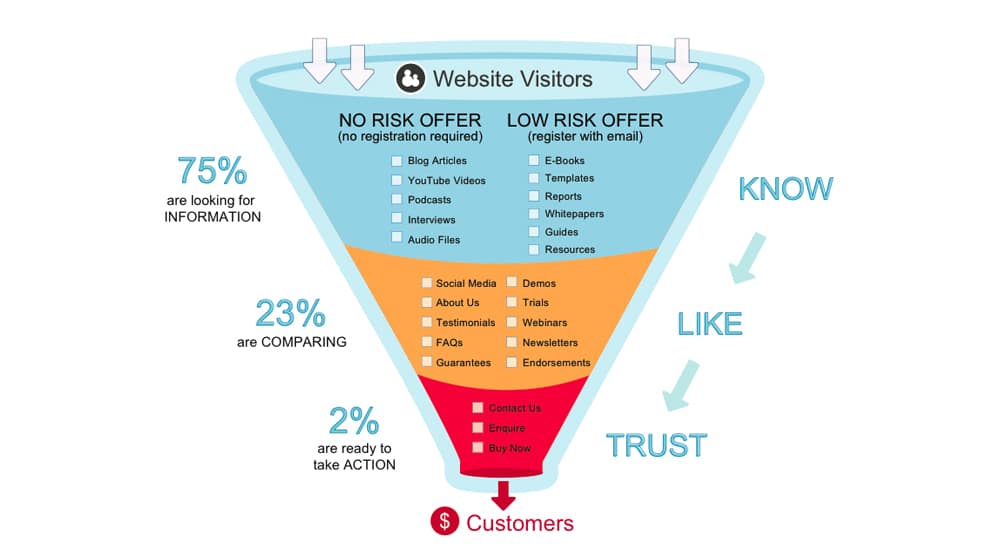
Whether you formulate it as a sales funnel, a flywheel, a linear progression, or a gravitational pull, the concept is the same. Become big and prominent that people can't help but come to you when they need something you can provide.
Here's what inbound marketing can do for your brand:
- Build brand awareness, so more people know who you are.
- Build favorability, so more people have a positive impression of your brand.
- Generate leads through organic strategies that can be nurtured over time.
- Build passive momentum so your business snowballs on its own.
- Nurture leads and gradually convert them into customers.
- Engage with customers to delight and please them to keep them loyal.
- Encourage and incentivize loyal customers to become brand advocates.
In short: it does just about everything you need to build, grow, and succeed with a business.
Techniques Used in Inbound Marketing
So, what all goes into inbound marketing? If you read the above section and feel like I've just described marketing as a whole or at least all of organic marketing, well, you're not incorrect. That's essentially the truth. Inbound marketing encompasses most of what is considered organic marketing and is made up of a wide range of tools and efforts you use to synergize into overall marketing strategies.
1. Keyword Research
All good inbound marketing begins with keyword research. Keywords are the foundation of how you interact with the internet. They're how people find you, and how you find people. Keywords guide the content you produce, the marketing efforts you create to promote that content, and the general range of topics people associate with your brand.
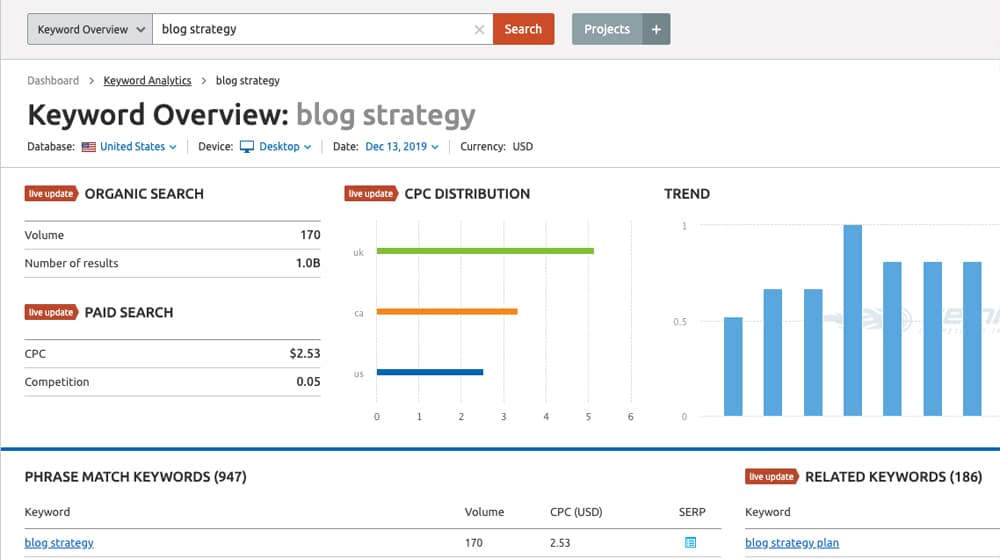
Good keyword research develops three tiers of keywords:
1. You have top-level keywords that have tons of competition and would be nearly impossible to rank for but they guide the overall topics of your site. They're more like categories than topics; think the genres in a library filing system.
2. You then have mid-range keywords that are competitive but highly valuable. These are a little broad, a little competitive, but within reach of dedicated marketing efforts. This is like sub-genres in that library; space opera, urban fantasy, and sorcery.
3. Finally, you have the long-tail keywords, the ones with relatively low competition and relatively low value. They're your bread and butter, where you make your name and build your awareness.
Keyword research guides most of the rest of your marketing efforts. You use those keywords in your paid advertising, in your promotion, in your content creation, in your SEO, in your social media; everywhere. Thus, it's important to get a foundational knowledge of how to perform keyword research and keep up with it on an ongoing basis. Ahrefs has a great beginner's guide here. That should get you started, and give you resources to dig in more as you want to learn more.
2. Buyer Personas
Buyer personas are similar to keywords in a way. Keywords help to narrow the focus of your topics and the content that you create. Buyer personas answer the other question: who are you creating this content for?
Every piece of content you create, whether it's a Facebook post, a blog post, a YouTube video, or an eBook, needs to be aimed at a specific subset of your audience. Some content is aimed at people who have never heard of you. Some are aimed at your long-time fans. Some are aimed at new customers, and some at old customers.
Buyer personas are archetypes. Are they looking to purchase something, or have they already purchased something and are looking for help on that item or service? Are they looking for information on how to do something themselves, or are they looking to find someone to help them solve the problem? What is their approximate age? Do they own a business? Which country do they live in? These are the kind of questions you have to ask before you create your content.
If your content and topics don't line up with the intent and the persona of the user who is searching for that content, you might experience a high bounce rate, a poor user experience, and low click-through rates.

Single Grain has a great guide to creating buyer personas, along with some templates. It will take some serious thought about the kinds of people who you want to reach with your business and the people you do reach already, to fill these out. You'll also want to revisit these from time to time; audience shifts happen.
3. Content Creation
Content is the bread and butter of inbound marketing as a whole. All kinds of content. Blog posts are the most obvious kind of content, but all forms of content you produce count. Social media posts, infographics, slide decks, YouTube videos, eBooks, explainer videos; it's all content.
Creating content involves taking your keyword research and developing specific topics within those keywords. You then develop a direction for that content, using buyer personas, to target specific groups of people within your audience. This allows you to develop the tone, voice, and format of the content. You can answer questions like "is this aimed at a new user or an experienced veteran?" All of that contributes to how your content is produced.
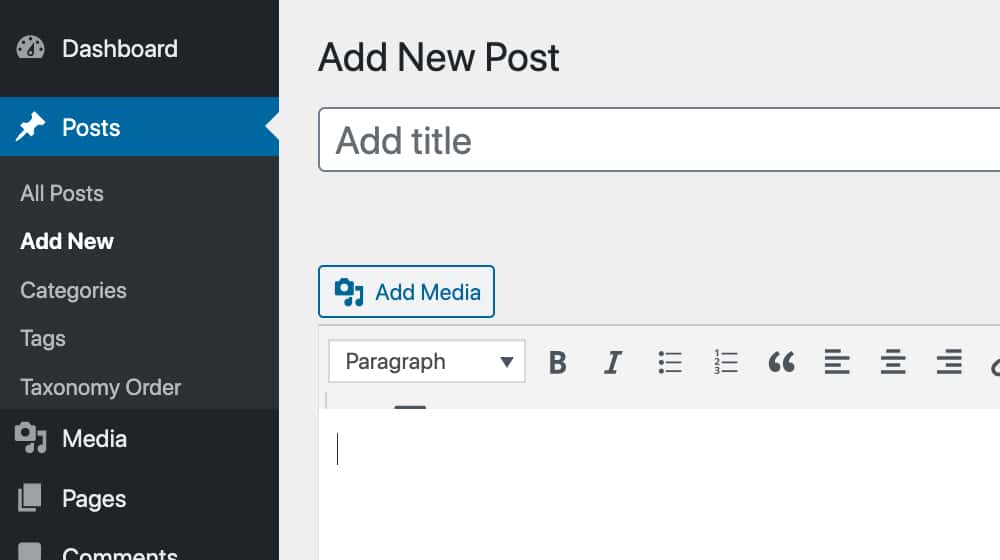
It's no surprise that many companies turn to content marketing specialists (hey, that's us!) to handle their content creation for them; it's a surprisingly complex subject and often oversimplified. I've written hundreds of posts on the subject that you can read by browsing our blog.
4. SEO
SEO is a foundational part of site design, content creation, and marketing. It's sort of like the fuel that powers the engine of your marketing. SEO is built into your site, in everything from your design to your structure, your site speed to your sitemap, and more.
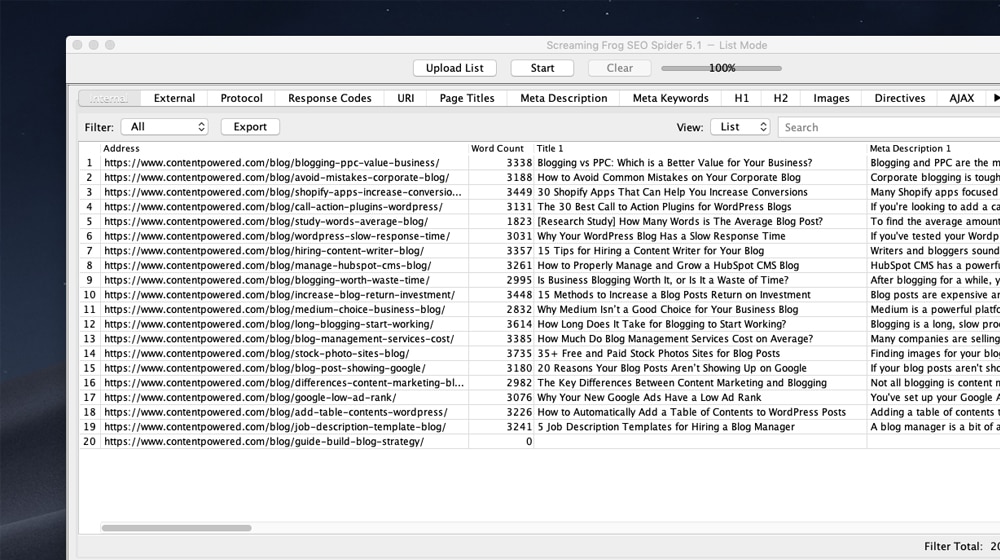
It's built into your content, with your keyword usage, your H1 (and H2) tags, and your meta elements. It's part of your marketing as well, with link building, guest posting, and attracting new organic visitors.
5. Content Promotion
Promoting content is part of the outreach and engagement portions of inbound marketing. While I did say that inbound marketing is everything except disruptive marketing, that marketing is adjacent.
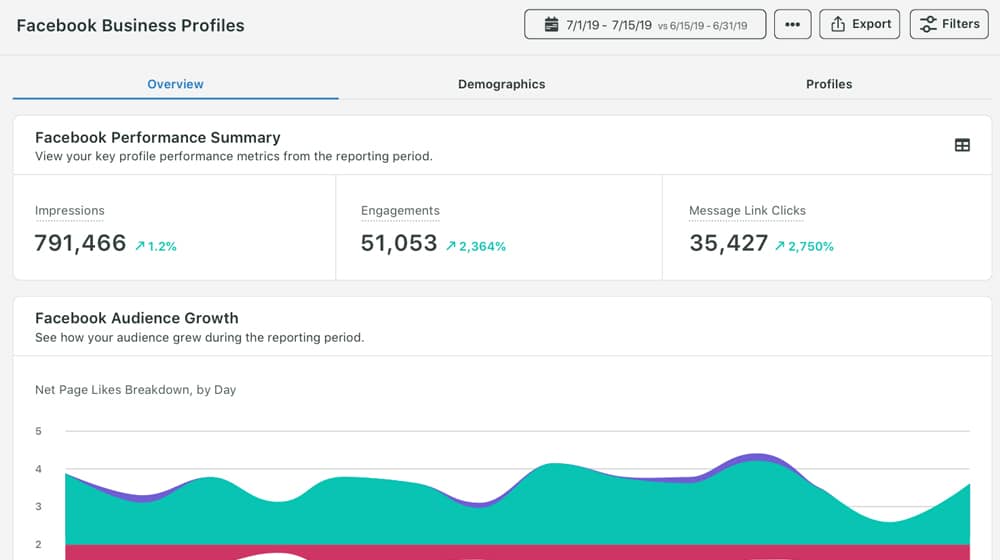
Creating social media posts, using calls to action on your content, getting other people to link to your content, publishing your content in relevant directories; a lot goes into promotion. Promotion does kind of straddle the line between inbound and outbound, though, so I'm not going to talk about it too much.
6. Backlink Building
Backlinks are the web upon which the internet is built. Google's algorithms began with measuring backlinks, and they've built upon that in increasingly sophisticated algorithms since.
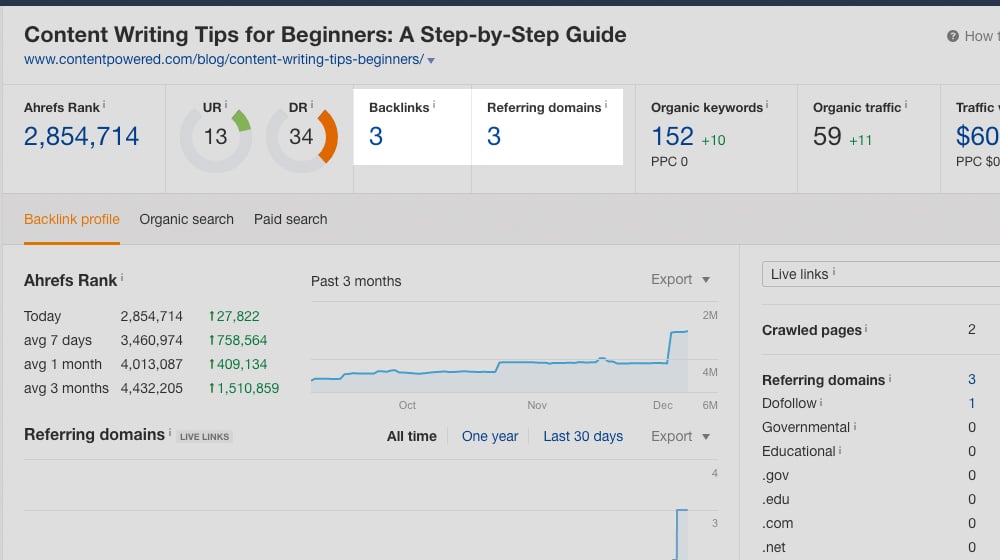
Building backlinks can be accomplished in a wide variety of different ways.
- Passively. Good content encourages users to link to it from their content.
- Socially. Networking with other people in your industry and promoting each others' content, or social content like expert roundups.
- Outreach. Getting people who own other blogs to link to you, or submitting guest posts to other blogs
- Strategically. Techniques like broken link building, where you find content that has moved or disappeared and replace it with your own.
Entire sites have been created specifically to cover link building and there's a wealth of information on the subject, more than I can cover here. If you have specific questions, feel free to ask them and I'll find resources to help you out.
7. Landing Pages
Landing pages are part of inbound marketing as a form of more advertising-focused content. When users click your ads, or click on social media posts, or land on them from your outreach, they usually land on your blog posts and your long-form content, but they might land on your landing pages instead.
Landing pages are pages that are not designed to rank on their own, so they are generally more self-serving and self-promotional than your other content. It's not content that is designed to attract new users, but rather pages that you use to convert your users into leads or convert your leads into customers. It's mid-stage and end-stage content.
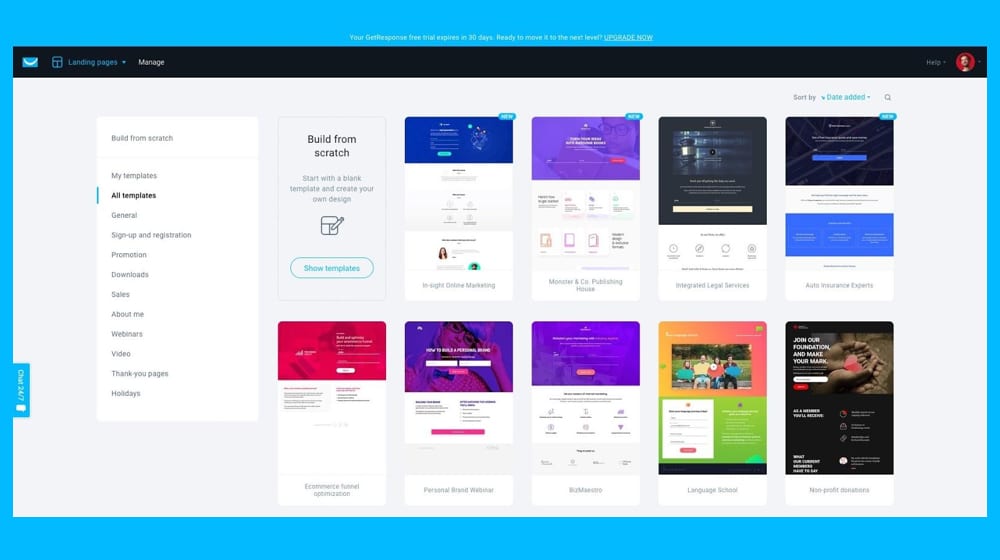
We create blog content that converts - not just for ourselves, but for our clients, too.
We pick blog topics like hedge funds pick stocks. Then, we create articles that are 10x better to earn the top spot.
Content marketing has two ingredients - content and marketing. We've earned our black belts in both.
This guide to landing pages from Hubspot is a great read to get you informed about the subject. There are a ton of tools to help with landing page development as well, which I'll mention later on in this post. We also recently wrote a post on several landing page creators that you can use to create these.
8. Calls to Action
When you're reading a piece of content and the author asks you to do something, that's a call to action. When a box slides in on the side of the page, or a pop-up covers it up for a moment, those are calls to action. When an email has a button you can click to visit a landing page or a form to fill out, that's a call to action.
Calls to action are a key element of marketing that a lot of novice marketers tend to forget. Many users know what they can do next, but don't always think to do it, so being forward and asking for it is just what you need to progress them deeper into your funnel or further around your flywheel.

I've written several posts specifically about calls to action, including this guide to how to add them to blog posts and this post of 50+ examples of successful CTAs. I recommend you check them out.
9. Lead Generation Forms
A companion to the call to action is a lead generation form. Forms are a staple of inbound marketing and are how you progress users from one stage to the next. Users become leads because they fill out a lead generation form. Leads become customers because they fill out whatever form they need to request a sales call, information on converting, or just the checkout process forms.
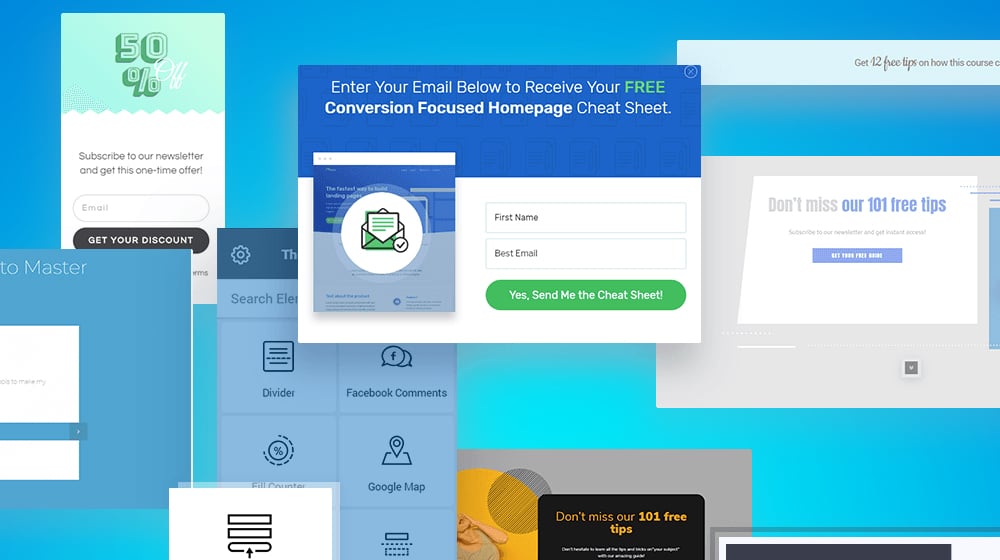
Forms can also serve tertiary purposes, like soliciting customer feedback via surveys. This information can then be used to refine your buyer personas, address subjects and topics you hadn't thought of before, or just refine your content.
Email is one of the best marketing channels a business can ask for. Think about other forms of inbound marketing. Social media posts rely on social networks showing your posts to the right users. Paid ads require you to pay for results. Blog posts require Google to serve your content, and all that entails. Email, though, is not beholden to any other company. You control your mailing list, you reach the users on it directly, and you can message them virtually anything without repercussions.
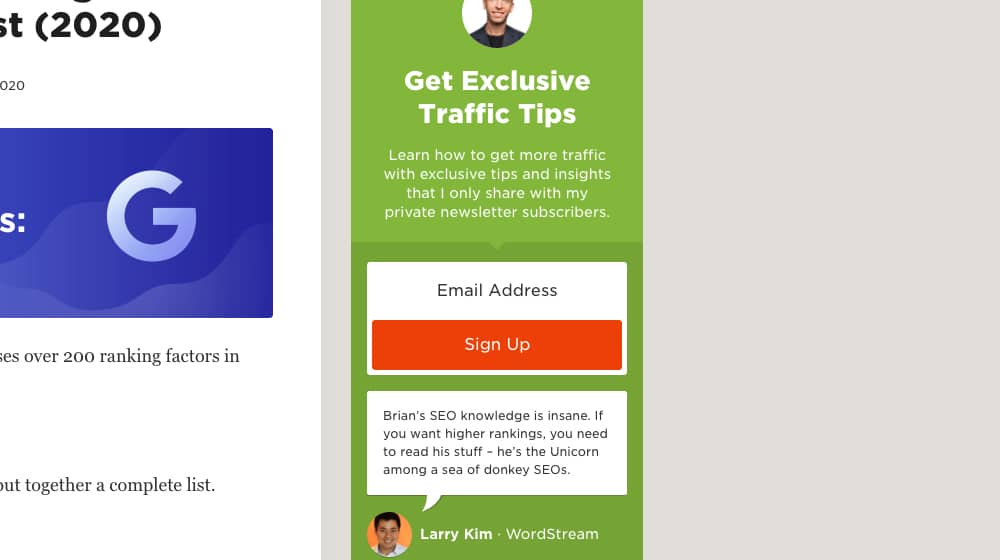
Developing compelling emails is very difficult. Email campaigns come in a variety of flavors; the onboarding campaign, the new user drip campaign, the ongoing newsletter, the special sales messages, and so on. Knowing who to reach with what kind of emails and when is a skill that takes a long time to learn. Managing multiple email lists, split testing those lists with different messages, and all the while making sure you're staying on the right side of spam filters is a lot of work, but very rewarding.
11. Customer Relationship Management
A more "hidden" aspect of inbound marketing is CRM. Customer Relationship Management usually involves a platform that aggregates communications and information about your customers. What are their names, what are their demographics, how and when did they enter your orbit, what stage of the funnel are they on, and so forth. None of this is customer-facing or public. It's all internal use content that you use to tailor your messaging to specific groups of customers.
12. Conversion Rate Optimization
Finally, the way you make your inbound marketing better; CRO. Conversion rate optimization involves looking at your entire process from top to bottom and questioning everything. Are you tracking how well your blog posts convert to sales in Google Analytics?

Are your keywords correct and aligned with your current business and audience? Are your buyer personas still accurate? Is your content performing as you expect it to? Are there points of friction in your conversion process that block users from taking the next step? Every question has an answer, and every answer helps you make the whole process better.
Tools and Services Useful in Inbound Marketing
Given all of the above, it should come as no surprise that inbound marketing has entire industries just dedicated to tools and services aimed at helping you perform specific tasks. I've reproduced most of the same categories as above here, with recommendations of tools you can use. I'm not linking all of them, because I don't want this post to turn into a giant article filled with links, but I'll link a few lists when there are plenty of tools to choose from.
1. Keyword Research Tools
Keyword research is perhaps the most important foundation in inbound marketing, so it's well worth it to pay for a high-quality tool or two to help you with it. There are dozens of such tools out there. Backlinko has a list of 15 of the best tools they've found, including Soovle, Ahrefs, Moz, and Keyword Snatcher.

One I like that he doesn't mention is AnswerThePublic, which uses Google's autocomplete to discover questions people are asking, which means demand for content, which means opportunity. We've written some articles comparing some of these services too, like this one, which compares Ahrefs vs Ubersuggest for keyword research.
2. Content Creation Tools
In my opinion, the best content creation tool is a content marketing firm. I'm biased, though, since I run one. It can be good to offload all of that work onto a group that knows what they're doing, but there are also a lot of pitfalls involved.
Content creation tools range from the likes of Canva or Adobe Spark for image creation, Grammarly for content optimization, Alitu for podcast creation, Biteable for video creation, and so on. SEMRush has a list of their top 40, and Social Bakers' list mentions another 33 tools you might decide to explore.
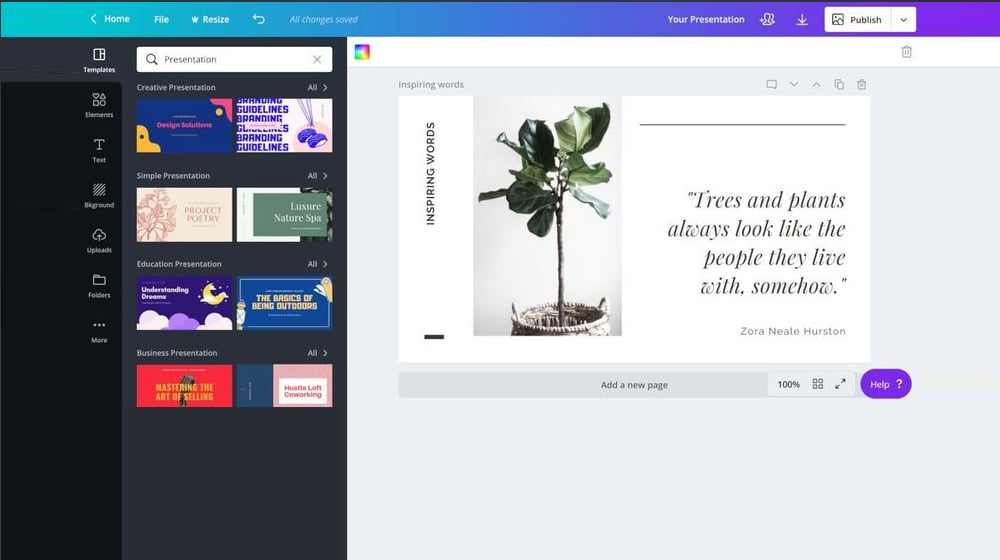
Personally, while tools are helpful, I find that experience is the driving factor in creating high-quality content. Nothing can buy you experience, you just need to spend the time.
3. SEO Tools
SEO itself is such a broad and varied industry that there are dozens of tools and features with very little overlap. Tools for analytics, tools for outreach, tools for tracking and monitoring, tools for social listening - there's too many to list.
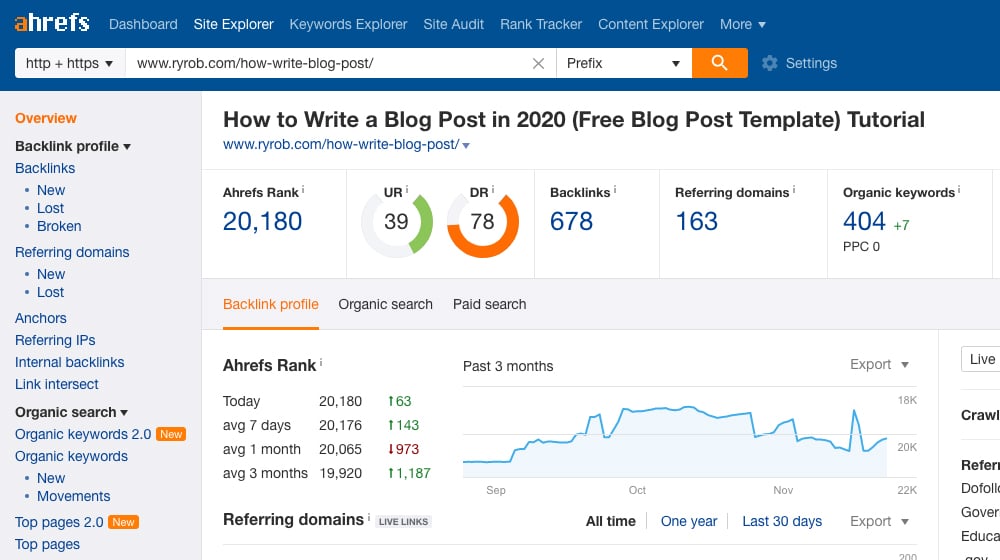
So, I'm not going to re-hash the same lists. Others have come up with a great list of SEO tools, such as these:
- Oberlo's top 18 SEO tools list.
- Ahrefs' 45 tried and tested SEO tools.
- Tech Radar's best SEO tools of 2020.
- Search Engine Journal's 109 best free SEO tools.
- Backlinko's Complete List of SEO tools.
I guarantee you'll find at least a few tools that you find compelling enough to use between those articles. Just remember that many tools have overlapping features, so sometimes it's better to find one paid tool that does the work of three or four free tools, so you don't waste time tabbing between them.
4. Email Management Tools
I mentioned up above that email management is crucial, but oddly, I don't have a lot of recommendations for tools here.
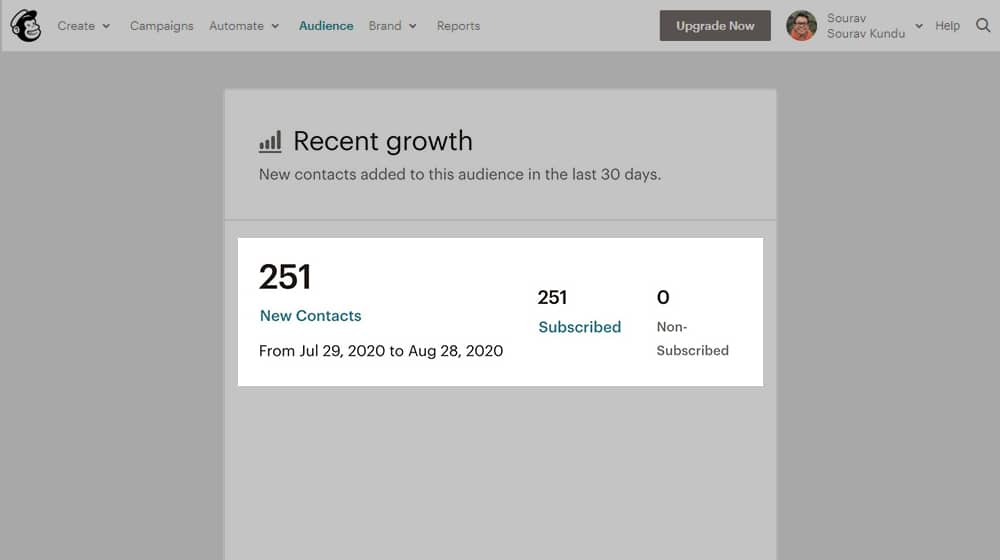
The thing is, there are only so many ways you can package up an email template generator, a newsletter manager, a split-test engine, and an email platform. Whether you want to use Mailchimp, SendInBlue, Hubspot, or another option, they all more or less do the same thing. Find one that suits your budget, has a feature or two that stands out as extra useful for you, and give it a try.
5. Link Building Tools
Link building is one of those areas of inbound marketing that can be done perfectly well by hand but can be automated and improved through the use of tools. Whether it's scraping the web for opportunities, monitoring competitors to see where they get links, or just monitoring your backlinks, tools can streamline the entire process.

Some I like include Ahrefs, Monitor Backlinks, and Ninja Outreach. Backlinko's list includes others, including Linkody, BuzzStream, and Pitchbox. Which tools you choose depends a lot on how much and what you want to automate, and how comfortable you feel with that automation.
6. Form Management Tools
Forms are another thing you can manage on your own - by coding them from scratch, or by using a platform or tool to manage them for you. I prefer the tools just because it's faster.
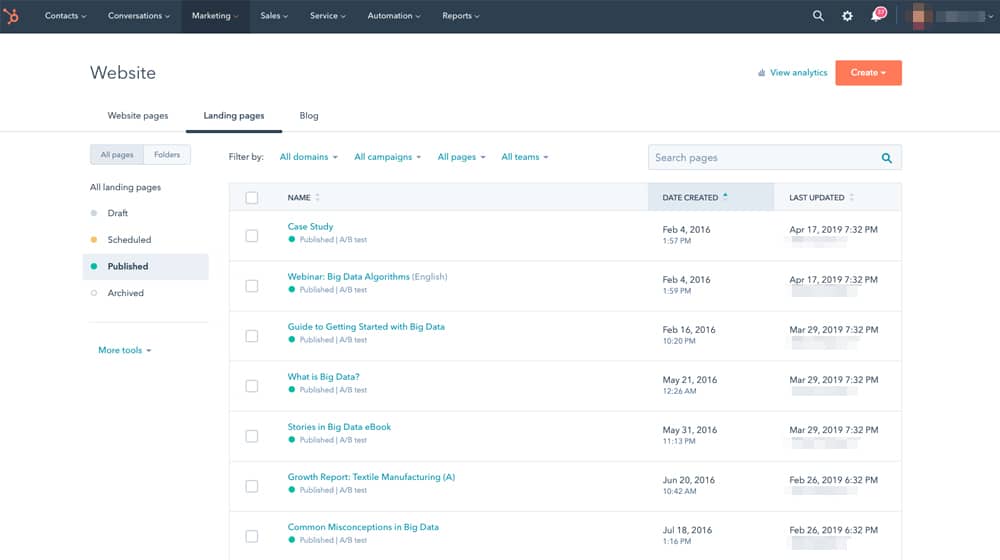
Forms are forms, though, so all form builders are the same at heart. Which tool you choose mostly comes down to factors like the volume of data they'll process, what data they can harvest beyond what you ask, how variable the form builder is, what templates they have, and what integrations they offer. Here's Hubspot's list of form builders, to give you an overview of what's out there.
Examples of Well-Done Inbound Marketing Campaigns
You have the elements, you have the theory, and you have the tools. But what does a successful inbound marketing campaign look like? There are tons of examples out there - if you know where to look. Here are a few of them.
1. Hubspot
Hubspot is a company specializing in inbound marketing. I've linked to them half a dozen times in this post alone, because of how useful their information is. That's your ultimate goal as an inbound marketer; you achieve the range and depth of presence that a company like Hubspot has.

Any question you have about their subject, there they are with a post in answer. Any task you want to complete? Either they have a tool to do it, a tutorial to help you, or a resource you can use to help yourself.
2. Runner's World
If you're at all interested in running, this site shows up everywhere. Take a look at the content they produce that ranks, though.
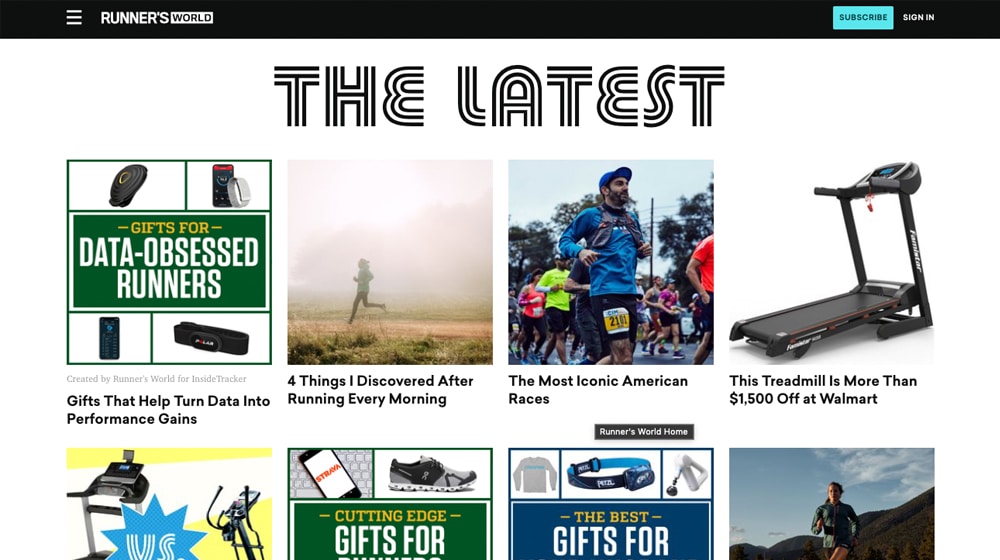
They have clever titles, clickable articles, and shareable content. It's easy to become a promoter of their content without even being their customer - because it's well-written and useful.
3. Wendy's
You've seen Wendy's Twitter posts before, I'm sure of it. The brand is well known for sassing other brands, creating elaborate pop culture references out of wrappers and marketing materials, and generally having an engaging online presence. I don't have access to their private numbers for how well those campaigns convert, but I guarantee they wouldn't be doing it if it didn't work. I see them mentioned on Reddit at least once a month, usually due to one of their funny replies that are going viral. They get millions of views for a single tweet.

So, there you are! I'd say this is all you'd need to know about inbound marketing, but you know better by now. This post is simply to get you started in the right direction.
Did we miss anything? Do you have any questions or comments? We respond to each and every comment, please feel free to share below and we'll reply shortly!



 30 Second Summary
30 Second Summary

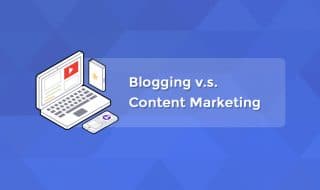
May 03, 2021 at 3:50 am
I've been struggling to build an effective lead generation process, LinkedIn and email outreach hasn't been working.
May 08, 2021 at 1:57 pm
Hey Kristie,
Thanks for your comment!
You might be interested in this article we wrote:
https://www.contentpowered.com/blog/steps-lead-generation-process/
The best strategy is a diversified one - try several different things at once and find out what works for you.
Something like blogging or building a social media community takes years, so don't be too quick to write it off as a failure.
Keep it up!
July 12, 2022 at 5:49 pm
Love the examples you cited. Wendy's strategy is particularly very smart.
July 21, 2022 at 7:20 pm
Hey Murray, glad they were useful!
August 23, 2022 at 3:40 pm
Great read!
August 26, 2022 at 12:45 pm
Thanks Ari!